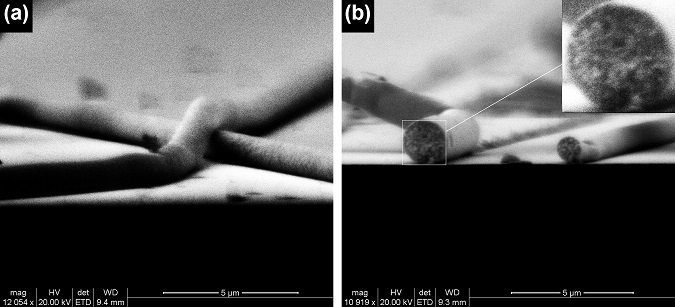Electrospinning
Electrospinning permits the facile production of super-thin fibers, typically under micrometer scale in width. This is achieved by the application of a strong electric field to a viscous polymer solution or melt. The electrospun fiber tends to whip wildly in the air before it is collected on a surface, forming fiber mats made of randomly oriented fiber.
Aligned electrospun fibers
A challenge in the field is to obtain aligned nanofibers, instead of the more common randomly oriented fibers, which can be of interest in diverse applications (for example, for sensors, optics, and tissue engineering). Aligning fibers involves controlling the fiber's trajectory. It is possible to obtain partial alignment by collecting the fibers onto fast-rotating cylindrical collectors. We have studied this process and shown that it is necessary to eliminate the fiber whipping to obtain perfect fiber alignment on the collector.
Figure: Side views of polystyrene fibers collected on the stationary target. A rigid continuous skin and porous internal structure are visible. These are due to the role of water as non-solvent, absorbed from ambient moisture (30%) on the fiber in the air while still containing solvent.
 |
| Side views of PS fibers collected on the stationary target at 30% ambient humidity, revealing circular cross section, and porous internal structure |
